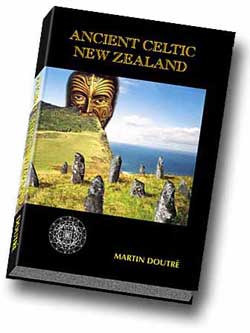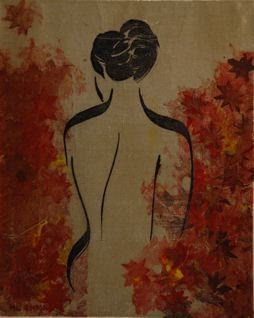

Over the past year or so I've had a few
cracks at the
self-styled scholars who believe that Maori were beaten to Aotearoa by Europeans, or
Chinese, or Egyptians, or Indians, or half a dozen other peoples who had no documented contact with these islands in prehistoric times.
I became aware of the variety and relative popularity of alternative theories of Kiwi prehistory while working on an Information Desk in the Maori-Pacific section of Auckland museum. Often, the historical understanding of museum visitors was severely affected by their subscription to one or another extravagant theory that denied the real past of these islands and the status of Maori as the tangata whenua of this country. It's hard to have a useful discussion about the Kaitaia lintelpiece and other masterpieces of Maori carving, for instance, when your interlocutor believes that those carvings were made by Phoenicians or Celts, and then stolen by Maori. It's hard to talk about the meaning of the Treaty of Waitangi with somebody who has been convinced by a well-designed but utterly flakey website that Maori were the third or fourth people to arrive on these shores.
Perhaps the most aggressive proponents of an alternative theory of Kiwi prehistory are those folks who believe that Celts settled these islands in ancient times, only to be conquered by the Maori, who appropriated much of their material culture. The best-known advocate for the Celts is Martin Doutre, an American-born immigrant to New Zealand who has published a massive and whimsical book called
Ancient Celtic New Zealand and who maintains a very odd website
with the same name. Doutre spends his weekends hiking around the backblocks of New Zealand, discovering the ruins of ancient Celtic observatories - 'Stonehenges of the South Pacific' - where other people see random collections of rocks.
Like a number of advocates of alternative, incredible versions of New Zealand prehistory, Doutre has links with the extreme right-wing end of the political spectrum. His name pops up frequently at the website of the
One New Zealand Foundation, a small but very grumpy organisation set up to oppose the Treaty of Waitangi, state support for the Maori language and, it seeems, all forms of biculturalism. Doutre has written admiring letters
to the neo-Nazi pseudo-historian David Irving, and he also appears to have
connections to the kookiest parts of the '9/11 Truth' movement. Kerry Bolton, one of this country's best-known neo-Nazis and the former theorist for the National Front, has published a
book on New Zealand prehistory which makes much the same arguments as Doutre. Bolton has lately become a
contributor to the One New Zealand Foundation's website.
In
The Politics of Nostalgia, his fine study of the far right in New Zealand, Paul Spoonley argued that one of the main barriers to fascist politics here was the status of the Maori people as tangata whenua. Pakeha Kiwis could not, Spoonley suggested, imitate the 'We were here first', 'Keep our country white' rhetoric that had helped make neo-Nazism popular amongst certain sections of modern European societies.
The theory that the ancient Celts settled New Zealand first before being conquered by Maori can be seen as an attempt to dispose of the impediment to fascist propaganda that Spoonley noted. For the likes of Doutre, the One New Zealand Foundation, and Bolton, the assertion that an ancient European people - or the 'white tangata whenua', as Bolton calls them - were the first to settle these islands is enough to discredit Maori nationalism and the ideology of biculturalism. If Maori only took control of these islands as a result of a 'genocide' of Europeans and if taonga of Maori culture like the magnificent carvings at Auckland museum were actually produced by Europeans, then Maori lose their mana, and seem actually to deserve the treatment which was meted out to them by colonisers' armies and goverments.
Doutre and a number of his fellow thinkers employ a paranoid theory with its roots in anti-semitism to explain the apparent lack of evidence for their claims about New Zealand prehistory. They argue that a
massive conspiracy run by a sinister minority buries the proof that a massive ancient Celtic civilisation existed on these islands. It seems that some sort of special government squad, rather like the sinister and secret forces in
The X Files, is always ready to descend on excavations and confiscate Celtic bones and artefacts. Caves are sealed up and forests declared off-limits whenever Doutre and his co-thinkers get too close to the truth. Advocates for the theory of an ancient Celtic settlement of New Zealand wash up on this blog occasionally, to accuse me of being a spokesman for the vast Maori-led conspiracy to suppress Celtic history.
Now, though, it seems that the conspiracy might be losing its grip, and the heavy veil drawn over the truth about New Zealand history might have lifted. How else can a paranoid pseudo-historian explain the
recent investigation into the skull discovered several years ago beside a river in the Wairarapa? Experts have decided that the skull probably belonged to a middle-aged European woman, and radiocarbon tests have suggested that the woman was alive in 1742, twenty-seven years before Captain Cook made it to New Zealand and almost one hundred years before the start of the European settlement of the Wairarapa. Yesterday at least one of the advocates of the prehistoric Celts was using a comments box at this blog to celebrate the vindication of his theory:
Ha ha Maps better stop posting you anti-white racist and bitter halfcaste you have no answer to this skull which proves that whites were first in NZSome historians and Maori leaders are clearly apprehensive about the uses that might be made of the skull. Wairarapa Maori leader
Haami Te Whaiti thinks that 'the crypto-historians will have field day with this'. Kerry Howe, the Massey University historian who wrote a book about false theories of the first settlement of New Zealand,
has the same worry.
Neither Te Whaiti nor Howe has been willing to concede that a European was living in the Wairarapa in 1742. This is not evidence of a conspiracy by a monolithic intellectual establishment, but an entirely appropriate display of caution. There is no evidence, besides the recently-analysed skull, for a European presence anywhere in New Zealand in 1742.
The fact that the skull belonged to a woman, and was discovered some distance from the sea on the eastern side of the country, only makes it more of an anomaly. If the skull of a man was found lying in the sands of some West Coast beach and dated to 1742 it might possibly be explained away as the remains of a whaler or adventurer whose ship was wrecked on New Zealand shores. What, though, would a woman be doing in the inland Wairarapa at that date?
Martin Doutre and his friends undoubtedly believe that they have the answer to the puzzle posed by the Wairarapa skull. Has their golden hour of recogniton and credibility really arrived? I don't think so: one swallow does not make a summer, and one skull dated to the eighteenth century hardly constitutes reasonable evidence that a massive and advanced Celtic civilisation existed on these islands many hundreds of years earlier. If Celts really did establish a southern civilisation here, then we ought to be stumbling on skeletons, buried roads, walls, and so on every hour of every day. Not even the most elaborate conspiracy of radical Maori, elitist academics, and politically correct bureacuracy could conceal the truth from the eyes of Kiwis.
I'll post some more reasonable possible interpretations for the Wairarapa skull on the weekend, if I can manage to find a computer. In the meantime, it's worth remembering that some of the self-appointed experts rushing to acclaim the skull as proof for their theories have pretty unpleasant political motivations.
 There's a venerable tradition of artists, musicians and other creative types selling their souls for supernatural talents and/or commercial success. The poet Robert Graves went cap in hand to Diana, the rather crotchety old Goddess of the Moon, and begged her for inspiration, even at the cost of his soul. Robert Johnson is remembered as one of the most extraordinary blues guitarists of all time, but the price he had to pay, if you believe the legend echoed in songs like 'Hellhound on My Trail' and 'Me and the Devil Blues', was the gifting of his soul to the Prince of Darkness.
There's a venerable tradition of artists, musicians and other creative types selling their souls for supernatural talents and/or commercial success. The poet Robert Graves went cap in hand to Diana, the rather crotchety old Goddess of the Moon, and begged her for inspiration, even at the cost of his soul. Robert Johnson is remembered as one of the most extraordinary blues guitarists of all time, but the price he had to pay, if you believe the legend echoed in songs like 'Hellhound on My Trail' and 'Me and the Devil Blues', was the gifting of his soul to the Prince of Darkness. 






















